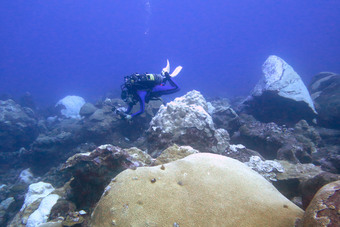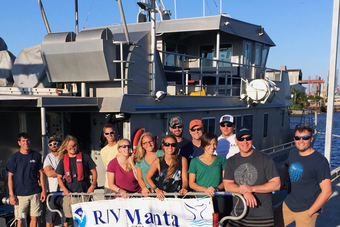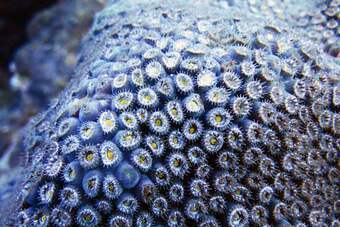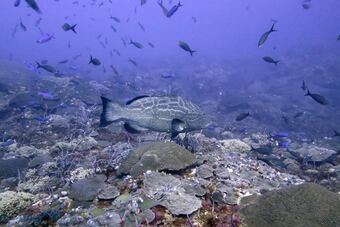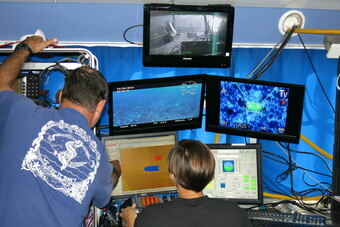Publications:
Polinski and Voss 2018
Similar to shallower conspecifics, mesophotic scleractinian corals found at ~ 30–150 m depths maintain important symbioses with photosynthetic microalgae in the genus Symbiodinium. Despite the importance of coral-algal symbioses in corals’ ability to thrive in multiple dynamic environments and potential role in connectivity, few studies have focused on mesophotic Symbiodinium assemblages. This study examines these assemblages in Montastraea cavernosa found at shallow (20–25 m) and mesophotic (45–50 m) depths at Flower Garden Banks National Marine Sanctuary and McGrail Bank, in the northwest Gulf of Mexico. Mesophotic corals contained significantly more Symbiodinium cells, more chlorophyll a per Symbiodinium cell, and more chlorophyll a and c2 per unit area coral tissue than shallow corals. However, both mesophotic and shallow M. cavernosa contained similar chlorophyll c2 per Symbiodinium cell. Next-generation sequencing of the internal transcribed spacer region (ITS2) of the ribosomal DNA indicated similar Symbiodinium assemblage diversity at all banks and between depths. All assemblages were dominated by sequences most closely related to S. goreaui, type C1, with three additional low-abundance sequences, identified as 2 C types and 1 A type, also consistently observed among colonies. Both the dominant C1 sequence and the background sequences persisted over two sampling years. These results suggest that algal symbiont assemblages will not limit connectivity potential in M. cavernosa in the northwest Gulf of Mexico. Furthermore, we hypothesize that increased Symbiodinium abundance may represent an effective light-harvesting strategy on light-limited mesophotic coral reefs.
22- 50 m
Mesophotic “mentions”
56 x (total of 5404 words)
Classification
* Presents original data
* Focused on 'mesophotic' depth range
* Focused on 'mesophotic coral ecosystem'
Fields
Physiology
Molecular ecology
Focusgroups
Scleractinia (Hard Corals)
Symbiodinium (zooxanthellae)
Locations
USA - Gulf of Mexico
Platforms
Remotely Operated Vehicle (ROV)
SCUBA (open-circuit or unspecified)


